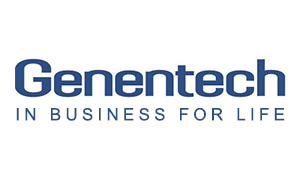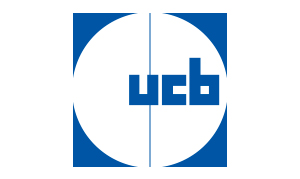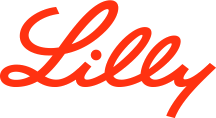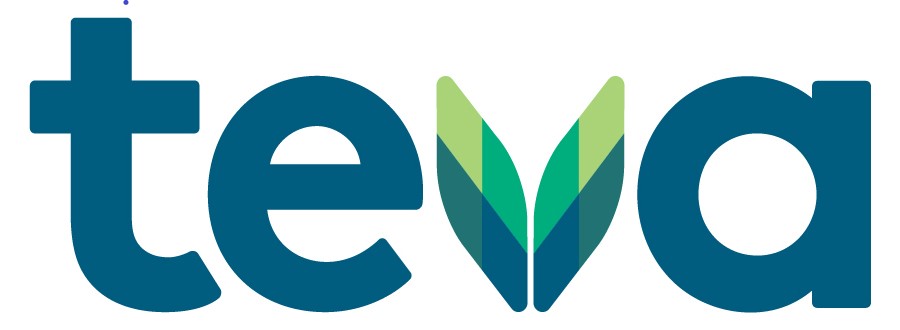Surely, the most generous yet unclear program of the CARES Act must be the Provider Relief Fund. Technically, it is called The Public Health and Social Services Emergency Fund, but we refer to it informally as the “HHS Provider Relief Fund”.
This ambitious and well-intentioned program was rolled out swiftly and widely by HHS in April. While it was touted as a “no-strings-attached” relief fund in a White House Press Conference, we have come to learn there is much more to it. Yet, after giving it weeks of thought and listening to dozens of experts on the topic, I find there is much more flexibility and opportunity within the rules of this program that I first thought.
As you prepare for decision day (i.e. accept the terms to keep the money or return it all) here are several points to consider. Just know every practice will have to make a judgement call for their own situation. There is no universal right or wrong decision, there is only the right decision tailor-made for your practice. No peer pressure: do what is right for your organization!
- Are you eligible to keep the money? This part is straightforward. Directly from the Relief Fund Terms and Conditions the Recipient certifies that it: 1) billed Medicare in 2019; 2) provides or provided, after January 31, 2020, diagnoses, testing, or care for individuals with possible or actual cases of COVID-19; 3) is not currently terminated from participation in Medicare or precluded from receiving payment through Medicare Advantage or Part D; 4) is not currently excluded from participation in Medicare, Medicaid, and other Federal health care programs; 5) and does not currently have Medicare billing privileges revoked. https://www.hhs.gov/sites/default/files/terms-and-conditions-provider-relief-30-b.pdfInitially #2 was unclear for many recipients in Rheumatology since we aren’t providing direct care for COVID+ patients. However, HHS clarified this on their program website under the heading “Who is eligible for initial $30 billion?” HHS states “If you ceased operation as a result of the COVID-19 pandemic, you are still eligible to receive funds so long as you provided diagnoses, testing, or care for individuals with possible or actual cases of COVID-19. Care does not have to be specific to treating COVID-19. HHS broadly views every patient as a possible case of COVID-19.” https://www.hhs.gov/coronavirus/cares-act-provider-relief-fund/index.html
- If you accept, how CAN you spend the funds? Hands-down, #1 question on everyone’s mind! Let’s unpack this one. First, in the Terms and Conditions1 it states “ the Payment will only be used to prevent, prepare for, and respond to coronavirus, and that the Payment shall reimburse the Recipient only for health care related expenses or lost revenues that are attributable to coronavirus. OK, that is vague! Let’s dig a little deeper.There is a small amount of guidance on eligible expenses that comes directly from the CARES Act. The Act states “…funds appropriated under this paragraph in this Act shall be available for building or construction of temporary structures, leasing of properties, medical supplies and equipment including personal protective equipment and testing supplies, increased workforce and trainings, emergency operation centers, retrofitting facilities, and surge capacity…” (Page 751, Line 6 https://apps.npr.org/documents/document.html?id=6819239-FINAL-FINAL-CARES-ACT) So we can expense things like buying overpriced PPE, additional medical supplies like sani-wipes and alcohol swabs, retrofitting our office like adding plexiglass between the patient and the front desk, etc. The key is all these direct expenses must be attributed to COVID.So now you’re looking at your past and estimated future expenses and it may not add up to much. However, remember the second part from the terms and conditions which talks about lost revenue. LOST REVENUE, NOT LOST PROFIT. There is no mention anywhere in this program about revenue minus expenses equals profit. We are dealing strictly and solely in revenue. It was easy to interpret this in many ways, until HHS published their FAQ (https://www.hhs.gov/sites/default/files/20200425-general-distribution-portal-faqs.pdf) related to this program. For anyone who wanted to apply for more HHS Provider Relief Funds they advised “An estimate the organization’s lost revenue for March 2020 and April 2020. Lost revenue can be estimated by comparing year-over-year revenue, or by comparing budgeted revenue to actual revenue”. Since most smaller doctor’s offices do not write yearly budgets we are stuck with the year-over-year monthly revenue comparison between 2020 and 2019. More on that later, but suffice it say that most practices are showing major reductions in revenue in March and April 2020 due to slower infusion, less patient visits, cutting out services like knee viscosupplementation, lower reimbursement for telephone-only visits, etc.After you claim some direct expenses you likely have a fair amount of lost revenue to claim. In just March and April 2020 my practice FAR surpassed the HHS Provider Relief payment we received in lost revenue alone. Here’s the good news: once you account for lost practice revenue under the guidelines of this program, the payment you make to your practice from HHS Relief Funds is no longer encumbered. You could spend it on regular practice operations.
- Consider the ways you CANNOT you spend the funds. Is this problematic for your practice?HHS has provided a long list of things for which we CANNOT DIRECTLY spend relief money. If there is going to be any problem, it likely will be on one of the first two prohibited expenses. No funds may be spent on: (read the Terms and Conditions for specifics on each topic)
- The reimbursement of expenses or losses that have been/should be reimbursed from other sources or that other sources are obligated to reimburse.
- The salary of an individual, through a grant or other extramural mechanism, at a rate in excess of Executive Level II (currently $197,300).
- The promotion of gun control.
- Lobbying to the US Congress or any state or local legislature or legislative body or be used to pay the salary or expenses of any grant or contract recipient, or agent acting for such recipient, related to any lobbying activity
- Abortions or health care coverage that provides abortions as a benefit.
- The creation of a human embryo or embryos for research purposes; or research in which a human embryo or embryos are destroyed, discarded, or knowingly subjected to risk of injury or death greater than that allowed for research on fetuses in utero.
- Any activity that promotes the legalization of any drug or other substance
- Maintaining or establishing a computer network unless such network blocks the viewing, downloading, and exchanging of pornography.
- The Association of Community Organizations for Reform Now (ACORN), or any of its affiliates, subsidiaries, allied organizations, or successors.
- The purchase of sterile needles or syringes for the hypodermic injection of any illegal drug (needle exchange programs)
- Propaganda, directly or indirectly, including by private contractor, for publicity purposes
- The contravention of section 552a of title 5, United States Code (popularly known as the Privacy Act), and regulations implementing that section.
- A contract, grant, or cooperative agreement with an entity that requires employees or contractors of such entity seeking to report fraud, waste, or abuse to sign internal confidentiality agreements or statements prohibiting or otherwise restricting such employees or contactors from lawfully reporting such waste, fraud, or abuse to a designated investigative or law enforcement representative of a Federal department or agency authorized to receive such information.
- Implementing or enforcing the agreements in Standard Forms 312 and 4414 of the Government or any other nondisclosure policy, form, or agreement
- Unpaid Federal Tax Liability
- Contracts or agreements with any corporation that was convicted of a felony criminal violation under any Federal law within the preceding 24 months.
- Any project that entails the capture or procurement of chimpanzees obtained from the wild
- Trafficking in Persons
- Does your practice need the HHS Provider Relief Funds?
This question is more difficult than it seems. Why? Because, we don’t have a crystal ball and cannot tell the future. For example, you finally got your PPP loan funded, so TODAY your bottom line might seem OK; the need for the HHS money may not feel as strong. However, have you considered the very possible “what ifs”? What if this pandemic hangs on and we are locked down into August? How would that affect your practice bank account? What if we reopen the country, do fine during the hot summer months, but have a resurgence in the fall? Could you easily financially weather another nationwide lockdown in October and November? Since this HHS program runs through the end of 2020, I encourage you to think long past today and what your needs might be later in the year.The question has been raised about who this money is really for and should rheumatology practices keep the money if they do not feel a heavy financial burdened by the pandemic. Was it only intended those on the frontlines who are most impacted? It is easy to infer intentions, but I would rather rely on statements made by the authority who facilitated these payments. In this case, I think it is best to look at what statements were made on the program. On the website they openly talk about getting relief funds to hospitals and other healthcare providers on the frontlines and rightfully so. However, in the sixth paragraph they go on to clarify:
In allocating the funds, the Administration is working to address both the economic harm across the entire healthcare system due to the stoppage of elective procedures, and addressing the economic impact on providers incurring additional expenses caring for COVID-19 patients, and to do so as quickly and transparently as possible. (https://www.hhs.gov/coronavirus/cares-act-provider-relief-fund/index.html)
For me, this direct quote clarifies that HHS and the President did not intend these funds solely for those entities on the frontline. But, every practice needs to come their own decision on this point. See the section below about moral issues in accepting these funds
- If you accept, how WILL you spend the funds? The best way to answer this question is to run some numbers.
1) Tally up what you’ve spent already per the acceptable use of the funds discussed above.
2) Run a Profit and Loss (P&L) statement for March 2019, April 2019, March 2020 and April 2020. You may need your accountant’s assistance. Toward the top of the (P&L) is your income (i.e. revenue). Ignore any expenses or “Cost of Goods Sold” as they are irrelevant to this program. Now, compare income/revenue for March 2020 to March 2019 and April 2020 to April 2019. These are your monthly lost revenue totals.With all these figures in hand, you have a glimpse into what two months of direct, eligible COVID expenses and lost revenue look like for your practice. Have you already covered all or most of the HHS Relief Payment you received? With any luck the rest of the year will not be as bad as March and April, but surely this COVID pandemic will be with us for a while and you have until the end of the year to utilize the HHS Relief Fund money. - Are there any moral issues for you and your practice in accepting this payment?Some NORM members have been considering this topic on the Community Forum. Do rheumatology offices need this money as much as urban hospitals battling COVID? Since most of us bill infusion drug to Medicare we received larger payments than many other specialists. Since we can typically reallocate unused drug to other patients do we feel COVID-related declines to our infusion business is an ethical reason to accept the funds?These are good questions to think through with your practice leadership. There is no right or wrong answer when it comes to moral questions since morality is based on personal beliefs. Based on the released guidance for the HHS Provider Relief fund your practice has every right to legally accept the funds if you can demonstrate acceptable expenses and lost revenue attributable to COVID-19. But morality and legality are two completely different things. Moral decisions must be made by an individual for their own situation.
Additionally, remember one of the stated intents of the program is to help practice stay open and to continue to take care of patients. In Rheumatology, we care for chronic patients who count on us to stay open for the long haul. Our employees are counting on us to keep them safe by providing the proper protective measures. If keeping this HHS Relief payment helps in both situations one could make the moral argument we are doing right by our staff and patients to use the funds in an intended manner.
Morality is in the eye of the beholder.
- As you near a decision on accepting this HHS Provider Relief Payment, here are some additional considerations about the attestation process.If you think you will attest to keep the money, read the 10 page Terms and Conditions again. You are agreeing to everything in this document. Next, gather the TAX ID number for the entity that received the payment. Record the exact payment amount and the account number into which the payment was deposited. They will ask for all this information on attestation. Lastly, go to the attestation portal and make the commitment: https://covid19.linkhealth.com/#/step/1If you are returning the HHS Stimulus Payment you should still gather all the information above, because it is in your best interest to attest to declining the money. NORM members have reported that the CARES Hotline is advising you do not need to attest to declining the payment, you simply need to return it. However, HHS has said very clearly if you do not attest within 45 days they will assume you are keeping the payment. I would hate for someone to return the money, not attest, and then find out HHS believed they kept the money even though it was successfully returned. I know this should not happen, but this is the government, they make A LOT of mistakes!As advised by a few NORM members on the community forum, you decline the payment on the very last page so this process can seem scary. One member advised keeping the CARES Hotline customer service agent on the line with you while complete the process to decline the payment. You will get a confirmation number for declining and you will get a case number from the customer service agent. I think this is a great suggestion.Lastly, when returning the payment the CARES Hotline advises you should work with your bank to initiate a return of the ACH payment with reason code R23 (credit entered refused by receiver).
There certainly is a lot to consider with this relief fund program. As pointed out several times, there is no right or wrong answer that applies to all NORM members and their practices. The best you can do is consider all points and decide what you think is right.
Best wishes to you as you make your way through this pandemic. Be well & stay healthy!
Jay Salliotte
NORM President
Note: thank you to board members Nancy Ellis, Andre Smith, and Andrea Zlatkus for their input on this blog post.












